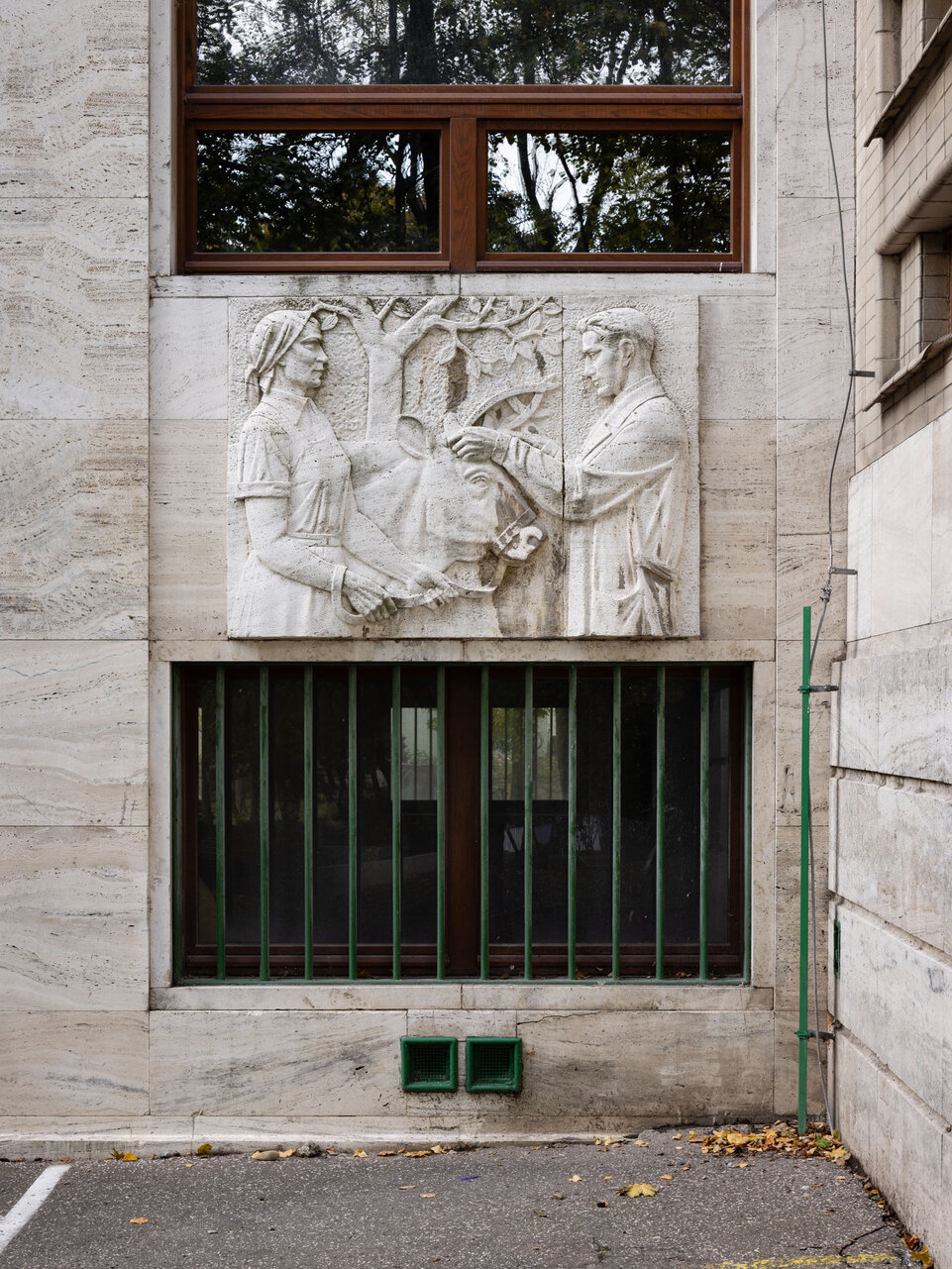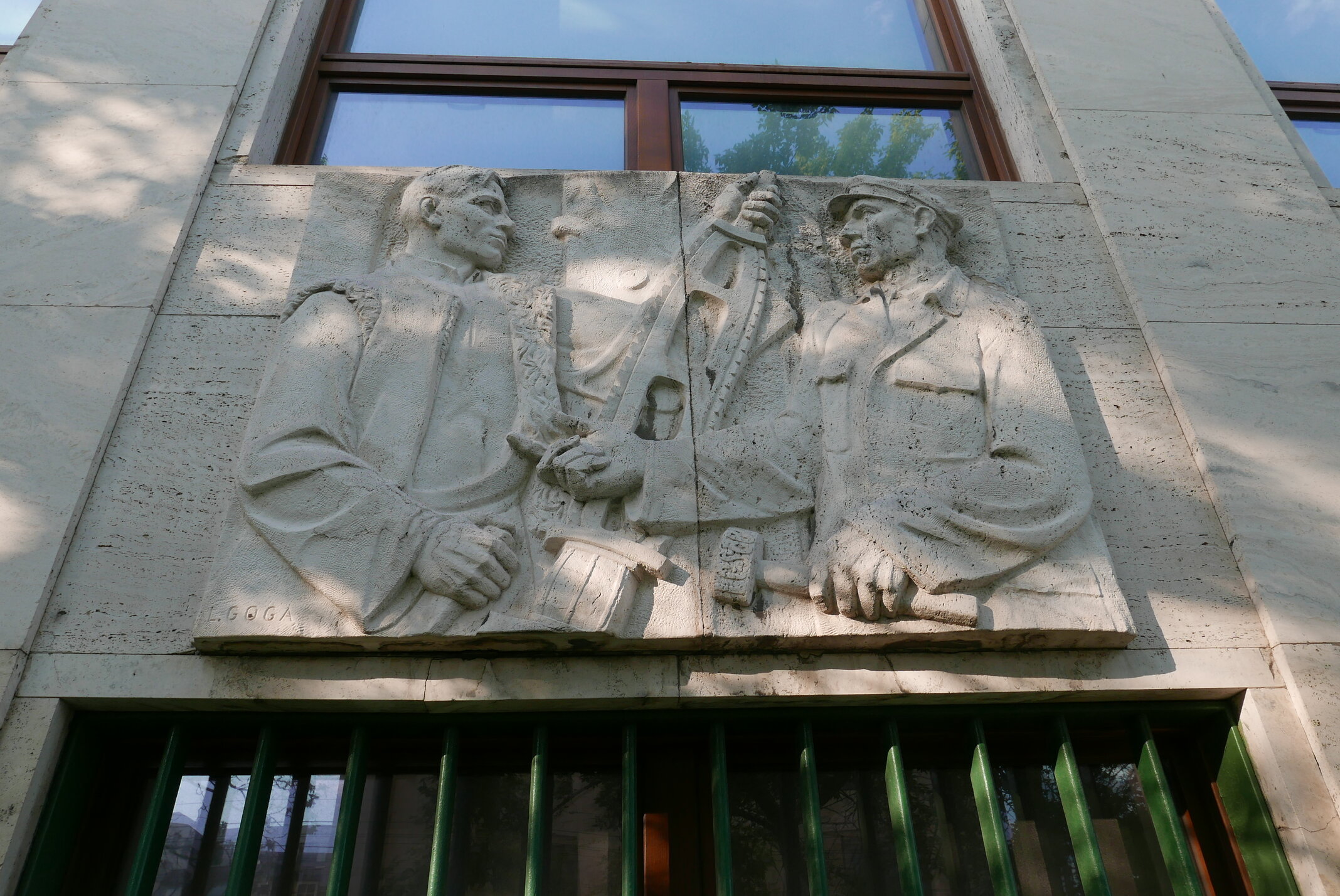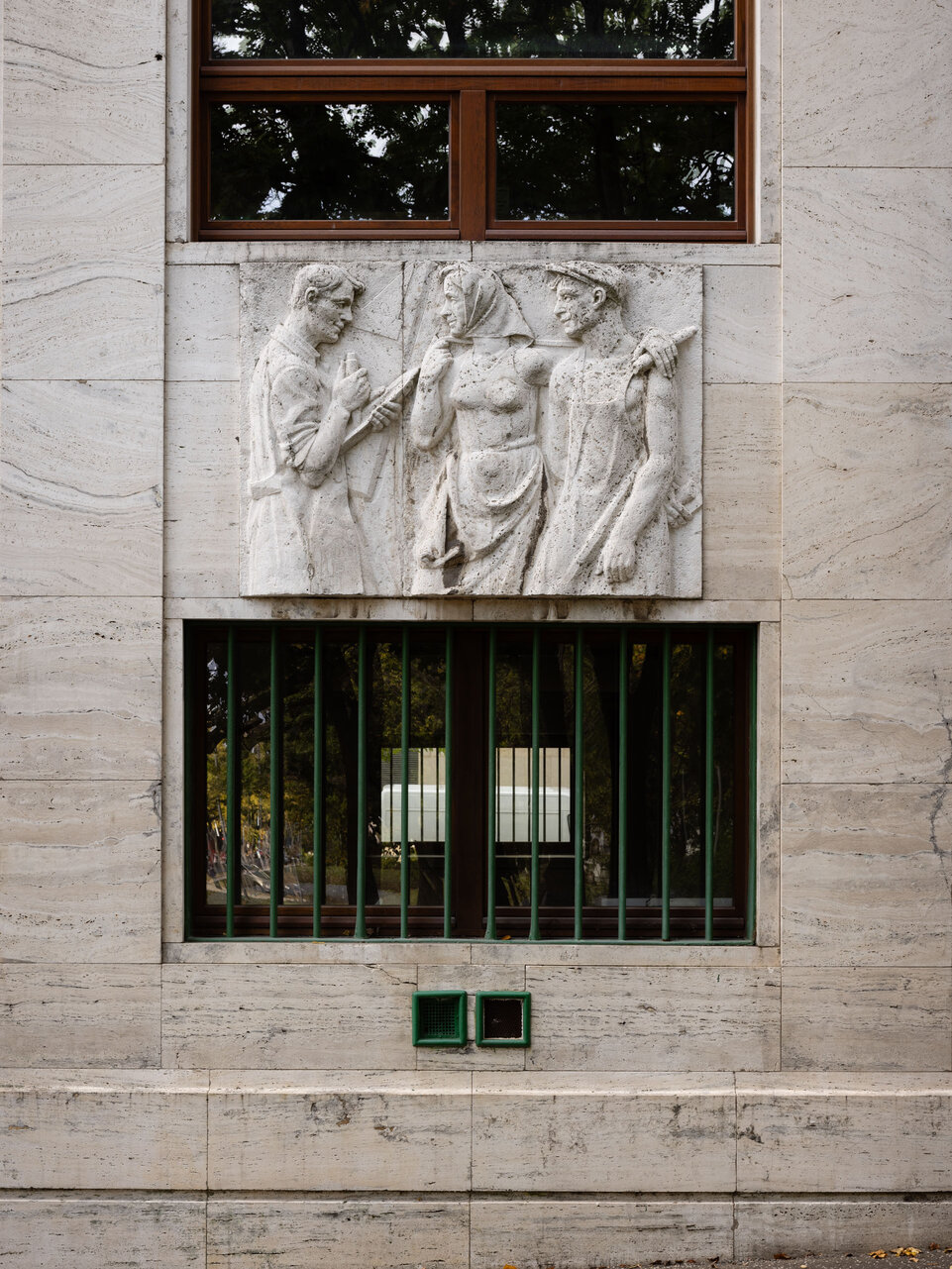The Pavilion of Theoretical Institutes of the Slovak University of Technology in Bratislava was built between 1948 and 1953 based on a project by the eminent Slovak architect Emil Belluš. The south wing of the building is decorated with a set of relief plaques that were mounted on the building between 1949 and 1953. Their creators were the most important Slovak sculptors of the 1950s.
There are twenty reliefs on the façade: eight on each of the western and eastern sides, three in the 1st floor windowsills on the southern side, and one above the building’s east entrance.
The collective theme is celebration of the professions that contributed most significantly to the building of a new society after 1948. These professions are symbolised by their distinctive attributes. Content of the reliefs, as well as the artistic method of processing (descriptive realistic depiction), conforms to the period of socialist realism in Slovakia during the first half of the 1950s. The composition is characterised by schematic representation; it features static scenes of two or three three-quarter figures (workers) depicted to the sides of the plaque, linked by the attributes of their profession.
Author of the Mičurin Movement relief, set on the eastern façade above the side entrance to the building, is Justín Hrčka. Also known as the young naturalists' movement, in the 1950s and 1960s it represented an important school of thought in the education of young farmers. It was named after I. V. Michurin (1855–1935), a Russian botanist and fruit breeder.
The relief comprises two separate scenes. To the left of the relief, in profile, a teacher is holding one of the branches of a fruit tree and instructing a pupil, a pioneer, who is standing to the left of the tree writing notes in his notebook. To the right of the relief, a young woman in a headscarf is depicted in profile with her hands above the pupil's head picking fruit from the tree.
ZZ
Research status as of 10 June 2023.



